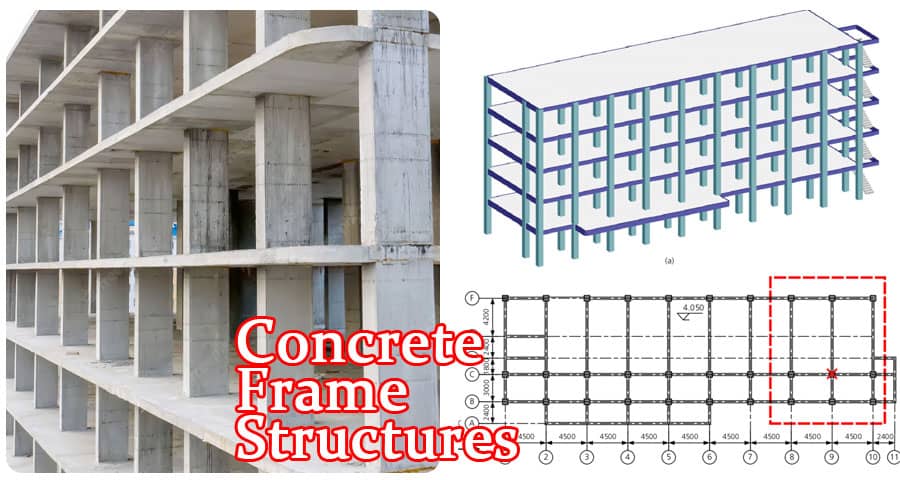Concrete Frame Structures

Concrete frame structures, also known as reinforced concrete frames, are an essential component in modern construction. These structures provide unparalleled strength, durability, and versatility, making them the backbone of numerous architectural marvels.
Understanding Concrete Frame Structures
What are Concrete Frame Structures?
Concrete frame structures consist of a skeletal framework made from reinforced concrete. This framework comprises vertical elements (columns) and horizontal elements (beams), which work together to support the building's weight and withstand various loads. The columns transfer the load to the foundation, while the beams distribute the weight across the structure. Reinforced concrete, which incorporates steel bars (rebar) or mesh, provides the necessary tensile strength to complement concrete's inherent compressive strength.
Key Components of Concrete Frame Structures
- Columns: Vertical elements that support the building and transfer loads to the foundation.
- Beams: Horizontal elements that distribute loads and connect columns.
- Slabs: Horizontal planes that form floors and ceilings, supported by beams.
- Foundations: The base of the structure that transfers loads to the ground.
Advantages of Concrete Frame Structures
Strength and Durability
Concrete frame structures are renowned for their strength and durability. The combination of concrete and steel reinforcement creates a robust framework capable of withstanding significant loads, including seismic and wind forces. This makes them ideal for high-rise buildings, bridges, and other structures requiring long-term stability.
Versatility in Design
One of the most significant advantages of concrete frame structures is their versatility in design. Architects and engineers can create complex and aesthetically pleasing designs without compromising structural integrity. This flexibility allows for large open spaces, intricate facades, and unique architectural features.
Fire Resistance
Concrete is inherently fire-resistant, providing an added layer of safety in building design. In the event of a fire, concrete frame structures maintain their integrity longer than steel or wood, giving occupants more time to evacuate and reducing the risk of collapse.
Sound Insulation
The density of concrete provides excellent sound insulation, making concrete frame structures ideal for residential and commercial buildings in noisy urban environments. This characteristic enhances the comfort and privacy of occupants.
Low Maintenance
Concrete frame structures require minimal maintenance compared to other construction methods. The durability and resistance to environmental factors such as moisture, pests, and weathering reduce the need for frequent repairs and upkeep.
Applications of Concrete Frame Structures
Residential Buildings
Concrete frame structures are widely used in residential construction, from single-family homes to high-rise apartment complexes. Their strength and flexibility in design make them suitable for various architectural styles and floor plans.
Commercial Buildings
In the commercial sector, concrete frame structures are the preferred choice for office buildings, shopping centers, hotels, and hospitals. The ability to create large open spaces without compromising structural integrity is a significant advantage for commercial properties.
Industrial Facilities
Concrete frame structures are also prevalent in industrial construction, including warehouses, factories, and distribution centers. The robustness of these structures ensures they can withstand heavy machinery and industrial processes.
Infrastructure Projects
Concrete frame structures play a crucial role in infrastructure projects such as bridges, tunnels, and transportation hubs. Their durability and load-bearing capacity make them ideal for supporting heavy traffic and harsh environmental conditions.
Construction Techniques for Concrete Frame Structures
Formwork
Formwork is a temporary mold used to shape the concrete until it hardens. There are various types of formwork, including timber, steel, and aluminum, each offering different advantages in terms of cost, ease of use, and reusability. Modern formwork systems are designed for quick assembly and disassembly, improving construction efficiency.
Reinforcement Placement
Reinforcement placement is a critical step in constructing concrete frame structures. Steel bars or mesh are placed within the formwork according to the design specifications. Proper placement ensures the concrete structure can handle tensile and compressive forces effectively.
Concrete Pouring
Once the formwork and reinforcement are in place, concrete is poured into the molds. The concrete mix must be of high quality to ensure the final structure's strength and durability. Pouring is typically done in layers, with each layer being compacted to remove air pockets and ensure uniformity.
Curing
Curing is the process of maintaining adequate moisture and temperature conditions for the concrete to harden properly. This step is crucial for achieving the desired strength and durability. Curing methods include water curing, steam curing, and the use of curing compounds.
Removal of Formwork
After the concrete has sufficiently hardened, the formwork is removed. The timing of formwork removal depends on the type of concrete used, ambient conditions, and the specific requirements of the project. Early removal can compromise the structure's integrity, while delayed removal can affect construction timelines.
Innovations in Concrete Frame Structures
High-Performance Concrete
High-performance concrete (HPC) is an innovative material offering superior strength, durability, and workability. HPC is used in demanding applications, including high-rise buildings and infrastructure projects requiring exceptional performance.
Precast Concrete
Precast concrete involves casting concrete elements in a controlled environment and transporting them to the construction site for assembly. This method offers several benefits, including improved quality control, faster construction times, and reduced site disruption.
Self-Healing Concrete
Self-healing concrete is an emerging technology that incorporates materials capable of repairing cracks autonomously. This innovation can significantly extend the lifespan of concrete frame structures and reduce maintenance costs.
Sustainable Concrete
Sustainability is a growing concern in the construction industry. Sustainable concrete incorporates recycled materials, reduces carbon emissions, and enhances energy efficiency. The development of eco-friendly concrete technologies is paving the way for greener construction practices.
Conclusion
Concrete frame structures are a cornerstone of modern construction, offering unmatched strength, durability, and versatility. Their applications span residential, commercial, industrial, and infrastructure projects, demonstrating their adaptability and reliability. With ongoing innovations in materials and construction techniques, concrete frame structures continue to evolve, meeting the demands of contemporary architecture and engineering.
